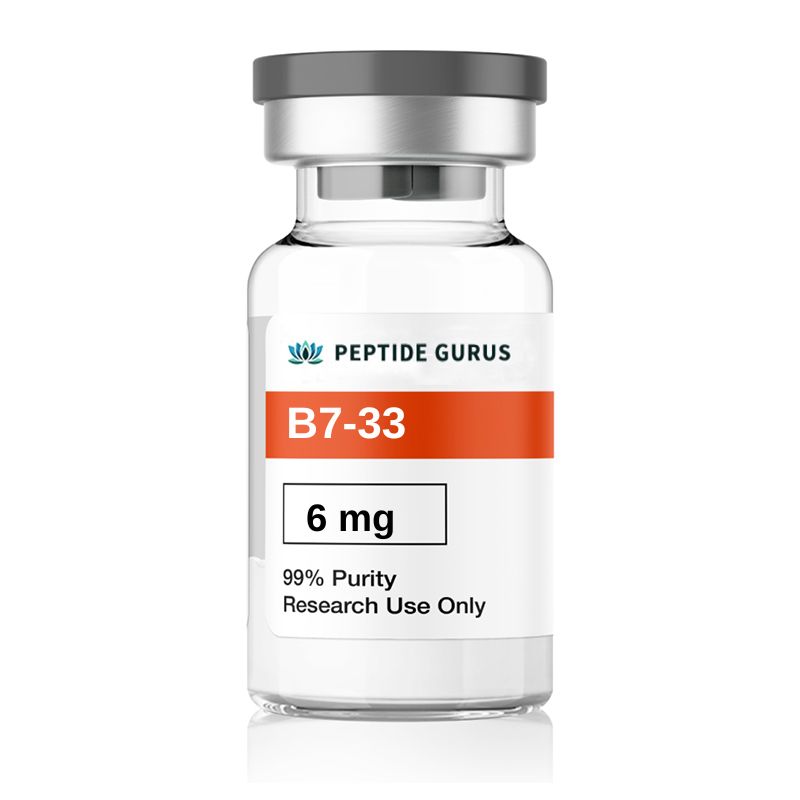



Categories: Peptides and Their Dosages
B7-33, a synthetic peptide derived from the H2-relaxin protein, exhibits significant anti-fibrotic effects and is under intensive research for its potential to ameliorate fibrosis in various acute and chronic conditions such as heart failure, lung inflammation, kidney disease, and more. In several animal studies, B7-33 has demonstrated a capability to reduce fibrosis by approximately 50%, markedly improving survival rates post-injury and presenting a novel approach to heart failure treatment that has not been seen in over two decades.
Product Usage: B7-33 is strictly intended for research use. This product is designated for in vitro experiments and laboratory research only. All information provided is for educational purposes, and any bodily introduction of this compound into humans or animals is strictly prohibited by law. This peptide should only be handled by licensed, qualified professionals and is not to be used or mislabeled as a drug, food, or cosmetic.
Introduction
B7-33 is a groundbreaking peptide, a shorter, synthesized variant of the naturally occurring H2-relaxin. Its development focuses on retaining the beneficial anti-fibrotic properties of relaxin without the complications associated with cAMP production. This peptide activates ERK1/2 phosphorylation pathways, enhancing the expression of matrix metalloproteinase 2 (MMP2), which aids in the breakdown of extracellular collagen, thereby reducing fibrosis and promoting healing in damaged tissues.
In-depth Overview and Research Insights
Mechanism of Action and Therapeutic Potential
B7-33 has shown promising results in the treatment of fibrotic diseases by preferentially activating the pERK pathway over the cAMP pathway, which is associated with fewer adverse effects such as tumor promotion seen with the full-sequence H2-relaxin. The selective pathway activation leads to effective reduction of fibrosis without the side effects of full-sequence peptides. B7-33’s anti-fibrotic action is mainly due to its ability to stimulate RXFP1-angiotensin II type 2 receptor heterodimerization, which further activates the pERK1/2 signaling pathway, leading to an increase in MMP-2 production.
Production and Economic Viability
One of the significant advantages of B7-33 over traditional H2-relaxin is its simpler molecular structure, which facilitates easier and more cost-effective production. This not only makes B7-33 a viable option for widespread clinical use but also reduces the production costs associated with more complex peptide structures.
Clinical Applications and Benefits
The clinical applications of B7-33 are vast, ranging from reducing heart scarring after injuries, which is pivotal in treating and managing heart failure, to potential treatments for lung diseases and kidney fibrosis. Moreover, its role in vascular disorders and specific pregnancy complications like preeclampsia highlights its versatility and broad therapeutic potential.
PeptideGurus is a leading supplier of American-made research peptides, offering top-quality products at competitive prices. With a focus on excellence and customer service, they ensure a secure and convenient ordering process with global shipping.
CONTACT